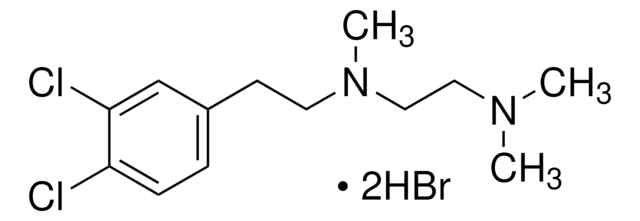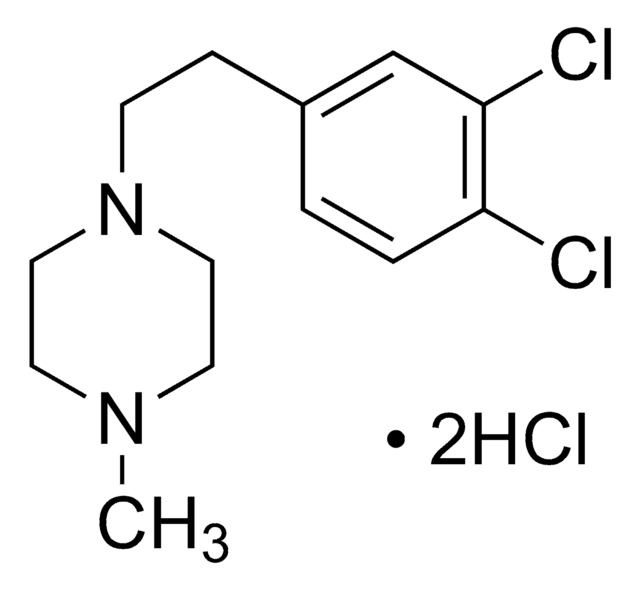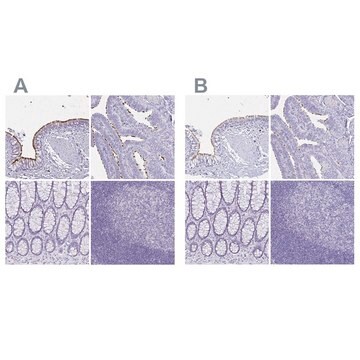SML2181
SA4503
≥98% (HPLC)
Synonim(y):
1-(3,4-Dimethoxyphenethyl)-4-(3-phenylpropyl)piperazine dihydrochloride, AGY 94806, AGY94806, Cutamesine, SA 4503
About This Item
Polecane produkty
Próba
≥98% (HPLC)
Postać
powder
warunki przechowywania
desiccated
kolor
white to beige
rozpuszczalność
H2O: 2 mg/mL, clear
temp. przechowywania
2-8°C
ciąg SMILES
COC1=CC=C(CCN2CCN(CCCC3=CC=CC=C3)CC2)C=C1OC
InChI
1S/C23H32N2O2.2ClH/c1-26-22-11-10-21(19-23(22)27-2)12-14-25-17-15-24(16-18-25)13-6-9-20-7-4-3-5-8-20;;/h3-5,7-8,10-11,19H,6,9,12-18H2,1-2H3;2*1H
Klucz InChI
XWOXAKBQEMQMFH-UHFFFAOYSA-N
Działania biochem./fizjol.
Kod klasy składowania
11 - Combustible Solids
Klasa zagrożenia wodnego (WGK)
WGK 3
Temperatura zapłonu (°F)
Not applicable
Temperatura zapłonu (°C)
Not applicable
Certyfikaty analizy (CoA)
Poszukaj Certyfikaty analizy (CoA), wpisując numer partii/serii produktów. Numery serii i partii można znaleźć na etykiecie produktu po słowach „seria” lub „partia”.
Masz już ten produkt?
Dokumenty związane z niedawno zakupionymi produktami zostały zamieszczone w Bibliotece dokumentów.
Nasz zespół naukowców ma doświadczenie we wszystkich obszarach badań, w tym w naukach przyrodniczych, materiałoznawstwie, syntezie chemicznej, chromatografii, analityce i wielu innych dziedzinach.
Skontaktuj się z zespołem ds. pomocy technicznej








